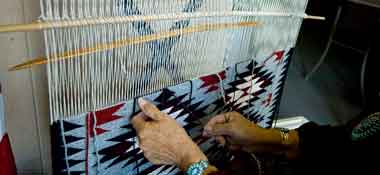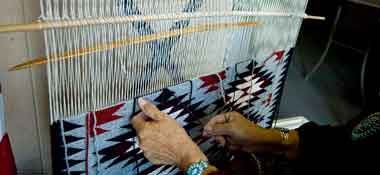
No one knows exactly when rug-making began. Rug weaving is a tradition that spans the centuries over a number of cultures.
There are several references to the art of weaving found in ancient sculptures and classical writings. Unfortunately, there is no evidence that proves these references were to pile rugs and not simply to flat weaves.
On the evidence of fragments found in ancient Egyptian and Mesopotamian tombs, we know that various forms of flat weaving were well-developed more than 4000 years ago.
Other evidence suggests that weaving of lipe rugs existed in the Middle East and other parts of central northwest, and eastern Asia long before 2000 BC. It is certain, however, that Asia was the first continent to produce rugs and that it was definitely the nomadic wanderers who created them. Tulsa Carpet Cleaner>>
Find Out More Rug History – Tulsa Rug Doctor
The rearing of sheep, the prime source of carpet wool, is a traditional nomad occupation. Add to this the necessity of thick coverings for people having to endure extreme cold and it’s likely the craft of weaving developed to replace the use of rough animal skins for warmth.
Some prehistoric people may have used animal skins as floor coverings in their caves or huts. After people learned to weave, they made floor mats from grasses and other plant material.
In 1947, Russian archaeologist Sergei Rudenko made a major discovery that had a dramatic impact on the rug industry. He found what is now considered the oldest rug in existence.
This earliest known fabric made with pile, referred to as the Pazyryk rug, was discovered frozen in a Scythian burial mound in southern Siberia dating from the 5th century BY.
It incorporated the Ghiordes knot and had an average of 200 knots per square inch. This rug resembles later Oriental carpets.
Rug History Continued
Traditionally, people sat or slept on rugs on the floor. Islamic craft workers developed rug weaving into a fine art.
Craft workers used small lengths of various colored threads of wool or silk to make knots into specific patterns. The knots created a pile with a richly decorated surface.
Some of the finest silk rugs have 1,000 knots per square inch. Sometimes craft workers brocaded the rugs with gold and silver. The main areas of rug production in the Muslim world were Central Asia, Turkey, Iran, and the Caucasus region of Russia.
The weaving of pile rugs developed in India before the 12th century A.D. and spread to the rest of the East. In the Orient, rugs were usually made of pile fabrics knotted by hand, although other wears were employed as well.
Crusaders who traveled to the Middle East during A.D. 100 and 1200 probably brought rugs to Europe. Hand-knotted rugs were made in Europe by the Saracens of southern Spain as early as the 13th century.

